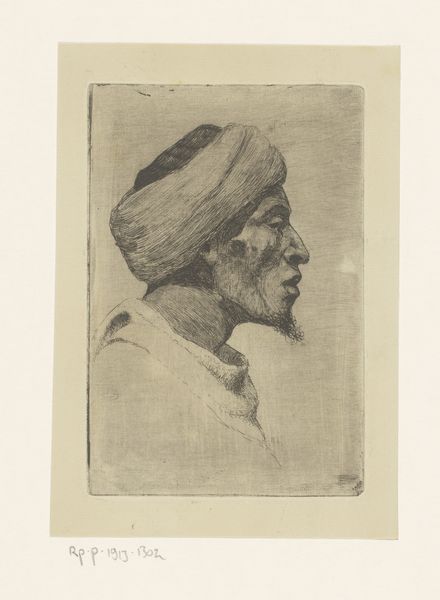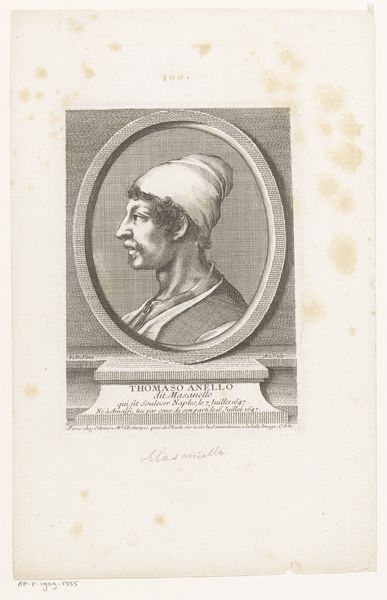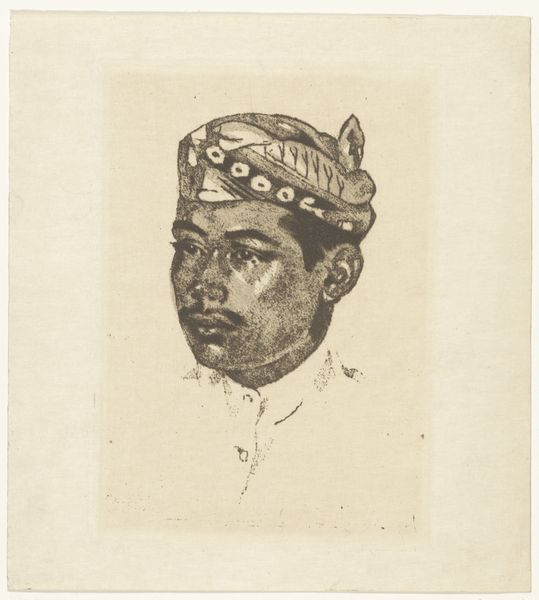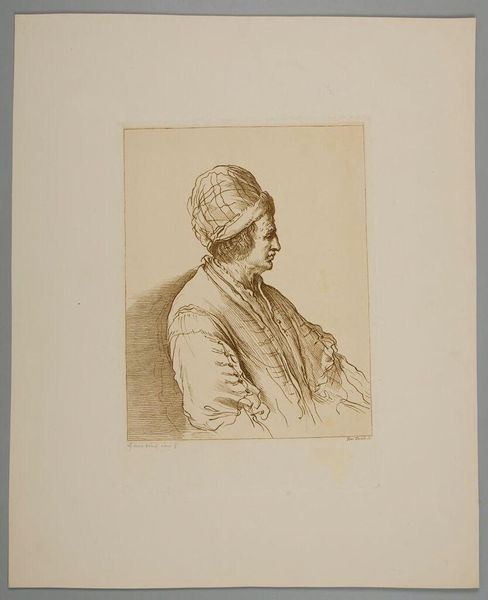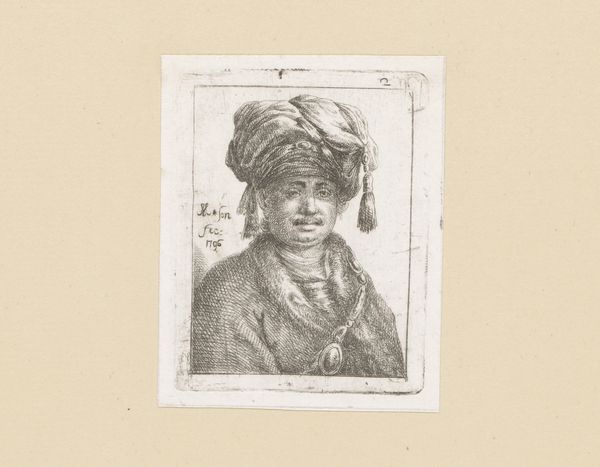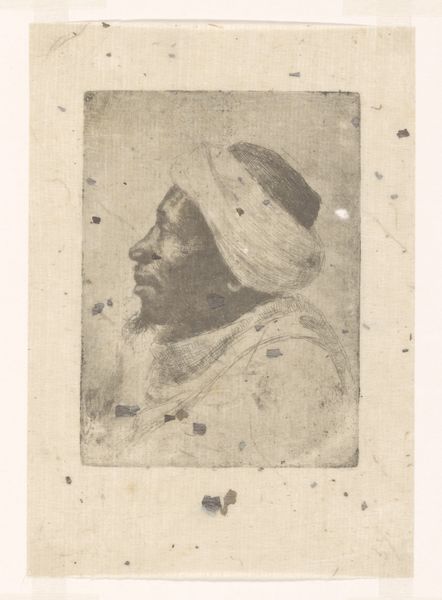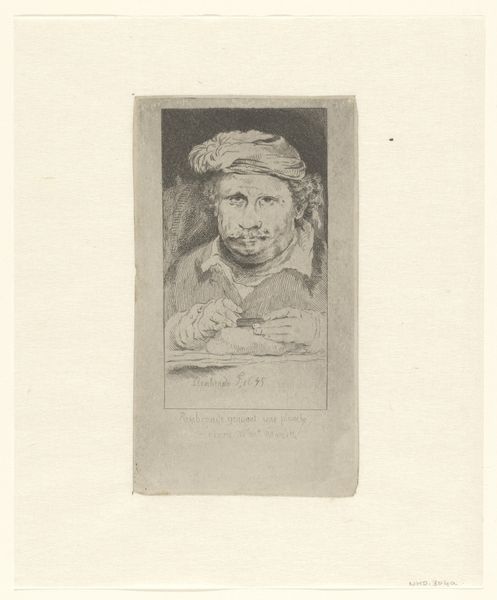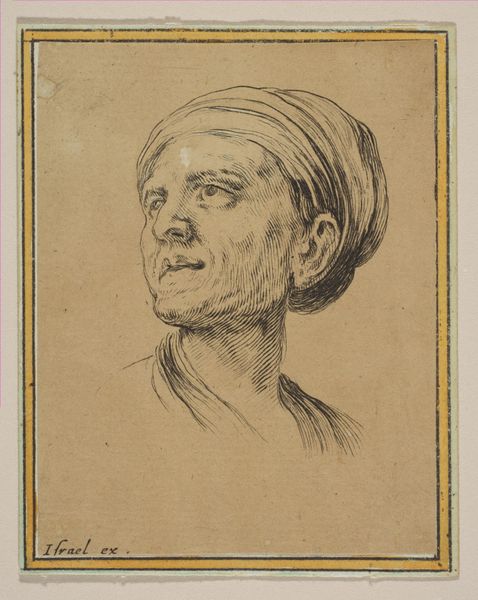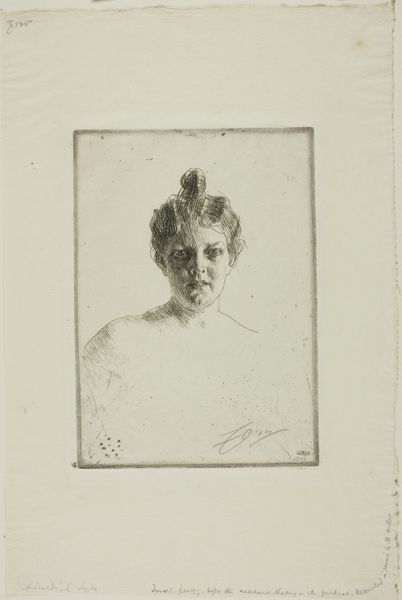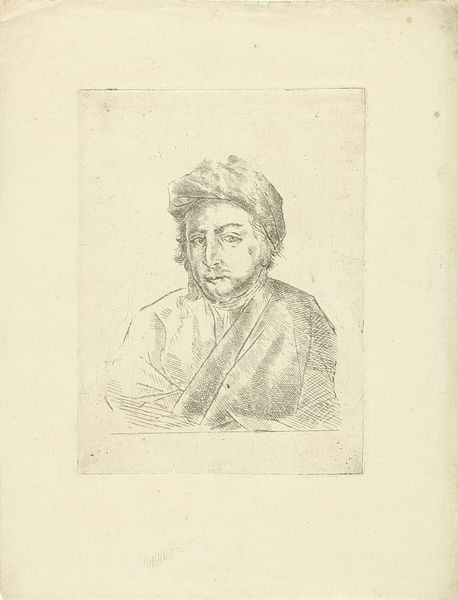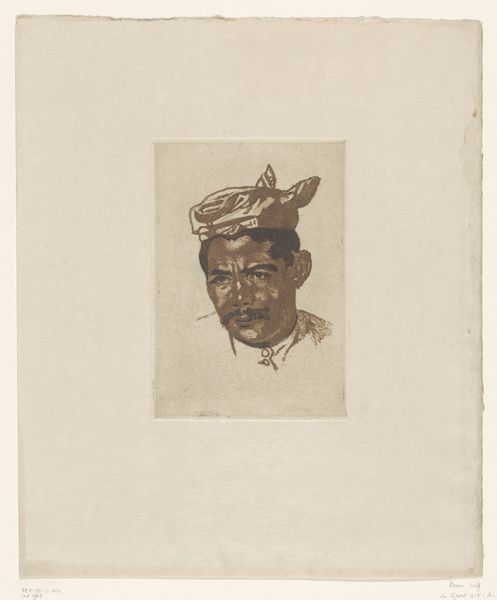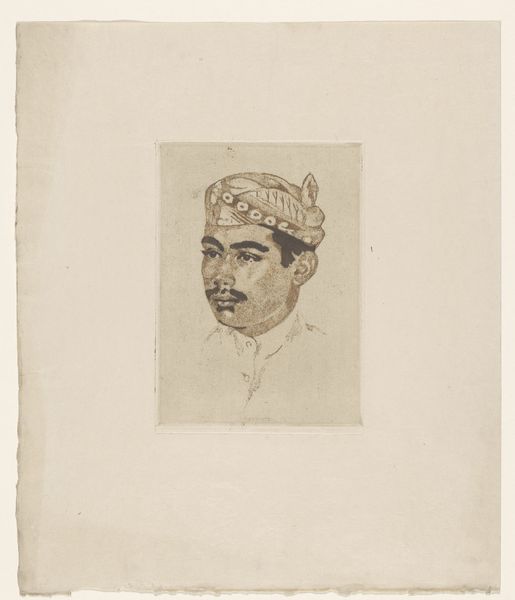
Head of Man with White Hat 1774 - 1789
0:00
0:00
drawing, print, etching, paper, ink
#
portrait
#
pencil drawn
#
drawing
# print
#
etching
#
pencil sketch
#
paper
#
ink
#
pencil drawing
#
sketchbook drawing
Dimensions: 1 1/16 x 5/8 in. (2.65 x 1.65 cm) (image)1 7/8 x 1 3/8 in. (4.75 x 3.5 cm) (sheet)
Copyright: Public Domain
Curator: It’s a fascinating portrait isn’t it? Norblin de la Gourdaine's "Head of Man with White Hat," created between 1774 and 1789 using etching, ink and paper. What strikes you about it? Editor: The delicate lines! The whole piece seems so fragile. It looks almost like a quick sketch, but it’s an etching – that seems like a labor-intensive process. How do you interpret it? Curator: It makes me consider the production and consumption of images at that time. Etchings like this were often reproduced, circulated widely, almost like a proto-mass media. The artist isn’t just depicting a man, he’s engaging with a system of visual representation, right? A way to distribute the image and persona. Editor: That’s interesting. So, it's not just about the individual portrayed, but also about the mechanics of reproducing and sharing images using etching techniques and accessible materials like paper and ink at that time? Curator: Precisely! Think about the labor involved in creating the printing plate versus the relative ease of producing multiple prints. It democratizes access to the artwork in a way that painting never could. It asks us to think of this labor in material terms and contextualize the artist in terms of accessibility and potential consumers of his medium. The "white hat" also is clearly indicative of someone's class, do you think this may provide some sort of distinction in production for these prints? Editor: Absolutely. The etching process implies a level of craftsmanship and production inherently connected to its distribution, which could have created a different audience or have different connotations from paintings, right? Thanks. Curator: Exactly! Considering art through the lens of its material production really reframes how we understand its social impact. Something to think about.
Comments
minneapolisinstituteofart almost 2 years ago
⋮
Jean-Pierre Norblin de la Gourdaine was a French painter and printmaker active in Poland in the late 18th century. Norblin's charming miniature etchings, representing mostly male heads, street sellers, and vagabonds, reflect both in subject and technique the profound influence of Rembrandt's prints. Norblin was also drawn to Polish subjects, capturing the unfamiliar, exotic world around him in his depictions of men with colossal fur hats and curled moustaches, Cossacks, and Polish historical figures.
Join the conversation
Join millions of artists and users on Artera today and experience the ultimate creative platform.
